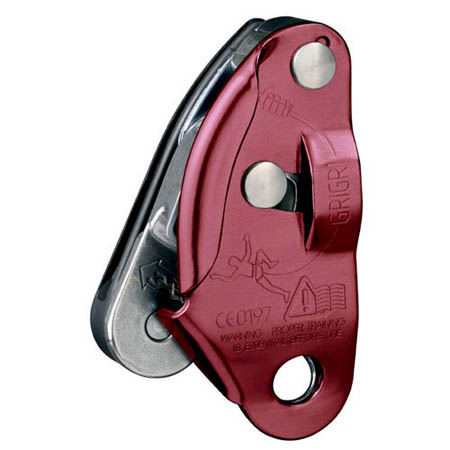
The Petzl Grigri
The body responsible for overseeing safety for youth outdoor activities has issued a safety alert over the use of a piece of climbing equipment.
The Adventure Activities Licensing Authority has produced guidance following an incident in which a student suffered spinal injuries at an outdoor centre. The girl was wearing a harness and the belaying setup should have protected her fall.
However, the student fell a significant distance, leading to an investigation in conjunction with the Health and Safety Executive.
The AALA said that there is no evidence to suggest the belaying device, a Petzl Grigri, suffered any kind of mechanical failure. The authority has, therefore, issued the alert to ensure the device, commonly used to belay climbers on indoor walls or sport routes, is used properly.
The advice was issued after consulting Petzl, its British distributors and the HSE. The Grigri is a braking device used both in controlling falls and in abseiling. The AALA says the equipment should not be considered an ‘automatic locking device’.
The alert says operators and centres using Grigris should read the manufacturer’s literature, which sets out how the belay device should be used.
Specifically, effective arrangements must be in place:
- a belaying system which uses appropriate equipment and techniques, selected with regard to the manufacturers’ instructions for use, the intended application and activity
- clear operating procedures
- competent belayers
- adequate supervision, for the activity, maturity and experience of the belayers and the group, to ensure that the belayers have, and maintain, control of the rope tail (brake rope), at all times when belaying.
The initial investigation into the incident found that the device was being used in a different configuration to that described in the Petzl user instructions, namely with a ground anchor. In addition, the rope may pass through the device, without operation of the braking cam, if the rope tail (brake rope) is not adequately controlled, when the climber’s weight is applied to the live rope.
A full investigation is continuing, but the AALA decided to issue the interim advice to bring the potential problems to light if the Grigri is not used as instructed. The alert says: “Deviations, such as the use of a Grigri attached to a ground anchor, should be justified in the user’s risk assessment, following discussion with a suitably competent technical advisor, and the manufacturer or their authorised supplier.”
Two years ago, the British Mountaineering Council offered advice that the Grigri should not be considered a ‘hands-free’ device, and that a controlling hand should always be on the rope tail.
Its technical committee said: “The Grigri works by arresting a fall when its pivoting cam locks after a sudden load. If this sudden loading is absent, rope may run through the device without locking the cam to such an extent that an incident such as [a slow fall with no rope slack] becomes possible – especially if the belayer is holding or pinching the device in any way.
“The two points are the important ones – there is no slack in the rope and the fall is very gradual, resulting in almost no shock loading to the system. Now, the Grigri works by arresting a fall when its pivoting cam locks after a sudden load. If this sudden loading is absent, rope may run through the device without locking the cam to such an extent that an incident such as the above becomes possible – especially if the belayer is holding or pinching the device in any way. The fact that a rope in use is nearly new and probably quite ‘slick’ may also contribute.”
Full instructions for use of the Grigri are on the Petzl website.